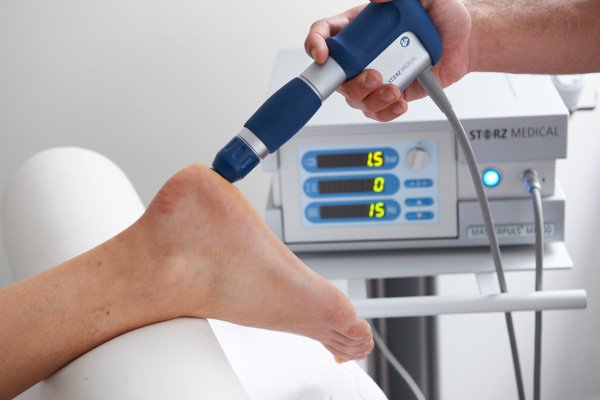Plantar fasciitis affects millions of people worldwide. With sharp, stabbing heel pain, particularly in the morning or after rest, this condition significantly impacts one’s quality of life. While traditional treatments such as rest, ice, and physical therapy are effective for some, many seek more advanced solutions. It is common for the plantar fascia to become inflamed due to repetitive strain or excessive stress. Common risk factors include:
- Age (most common between 40-60 years)
- Certain types of exercise (long-distance running, ballet dancing, aerobic dance)
- Foot mechanics (flat feet, high arches)
- Obesity
- Occupations that keep you moving
Many people experience severe pain as a result, leading many to seek advanced treatment options.
Enter shockwave therapy

Extracorporeal Shock Wave Therapy (ESWT) has emerged as a promising treatment for plantar fasciitis. Using high-energy sound waves, this non-invasive procedure promotes healing. For those in the surrounding areas, ShockWave Therapy has become an increasingly popular option for treating this stubborn condition.
How does shockwave therapy work?
ShockWave Therapy for plantar fasciitis works on several levels:
- Stimulates healing – The high-energy waves create microtrauma in the affected tissue, which triggers the body’s natural healing response. Increased blood flow promotes tissue repair and regeneration.
- Reduces pain – The treatment desensitizes nerve endings, reducing pain sensations.
- Breaking Down Calcifications – In some cases of plantar fasciitis, calcium deposits can form in the fascia. With shockwave therapy, these deposits are broken down, improving flexibility and reducing pain.
- Releases trigger points – The therapy helps release trigger points in the fascia that contribute to pain and stiffness.
Procedure – What to expect?
- Assessment – Your doctor will evaluate your condition, assess your medical history, and decide whether you should receive treatment.
- Preparation – The area to be treated is usually marked, and a special gel is applied to allow shock waves to be transmitted effectively.
- Treatment – The ShockWave device is placed against the skin, and the waves are delivered to the affected area. It usually takes between 15 and 20 minutes to complete the procedure.
- Post-treatment – Most patients can walk out immediately after the treatment, although it’s common to experience some soreness in the treated area for a day or two.
Typically, a course of ShockWave Therapy for plantar fasciitis consists of 3-5 sessions spaced a week apart. Many patients report improvement after just one or two treatments.
Shockwave therapy in TRT clinics
While shockwave therapy is often associated with orthopaedic and sports medicine practices, it’s increasingly offered in TRT (Testosterone Replacement Therapy) clinics. This may seem surprising at first, but there’s a logical connection. TRT clinics focus on optimizing hormonal health, particularly in men. Testosterone greatly influences physical performance and muscle mass. As men age or experience hormonal imbalances, they may be more susceptible to conditions like plantar fasciitis. This is due to changes in muscle strength, flexibility, and recovery capacity.
ShockWave Therapy Alpharetta provide a more comprehensive approach to physical health and wellness. This holistic strategy addresses both the underlying hormonal factors that may contribute to conditions like plantar fasciitis and provides targeted treatment for the condition itself.


